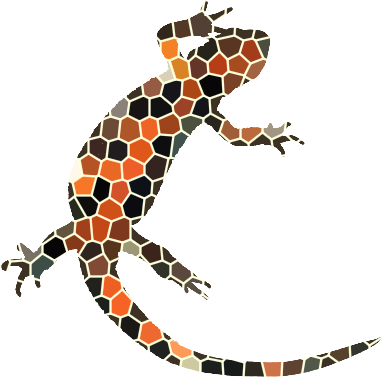<xml>Text Encoding and Processing as
Writing Intensive</xml>
Elisa Beshero-Bondar
@epyllia https://newtfire.org
Balisage: The Markup Conference 2020-07-28
Link to these slides: https://bit.ly/codeWrite
<code method="verbose" level="intense"/>
- New program: Digital Media, Arts, and Technology
- Faculty = multimedia artists, game designers, a musician, and a data analyst from Psych
- Who I am:
- ”English” to ”Digital Humanities”: coding, textual scholarship, the only ”wordy” person in this crew
- I teach Text Encoding and project development
- Poised between old and new fields and schools
- Program lacks its own official “W“ course

Writing in US Colleges and Universities
“Across the curriculum”
- ~40 year old movement
- Multiple writing courses from first year to graduation
- Available in every discipline
- Writing process: cycles of writing, discussion review, revision
- Repeated experience with writing improves thinking and communication skills
- Not lecture-driven
- Students workshop, lots of attention, small class sizes
See: ”What is writing across the curriculum?” Penn State Berks (2020)
Writing in US Colleges and Universities
“Intensive” (“W” course designation)
-
Class capped at 25 or less (multiple disciplines)
-
Writing designed to help students learn course topics
-
Writing geared to learning conventions in the field
-
Writing must involve informal and formal stages
-
Class = “discourse community”, students and faculty share evaluation, feedback
See: “Features of a Writing Intensive Course” Penn State Learning (2020)
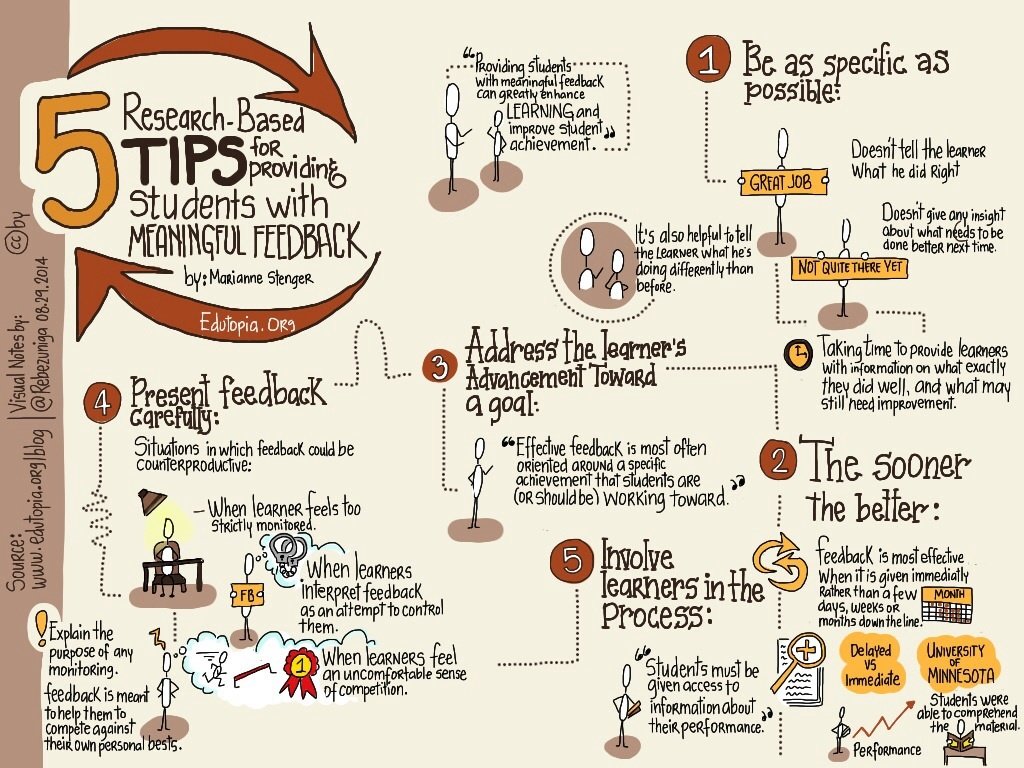
Rubrics are supposed to help with grading in writing intensive courses.

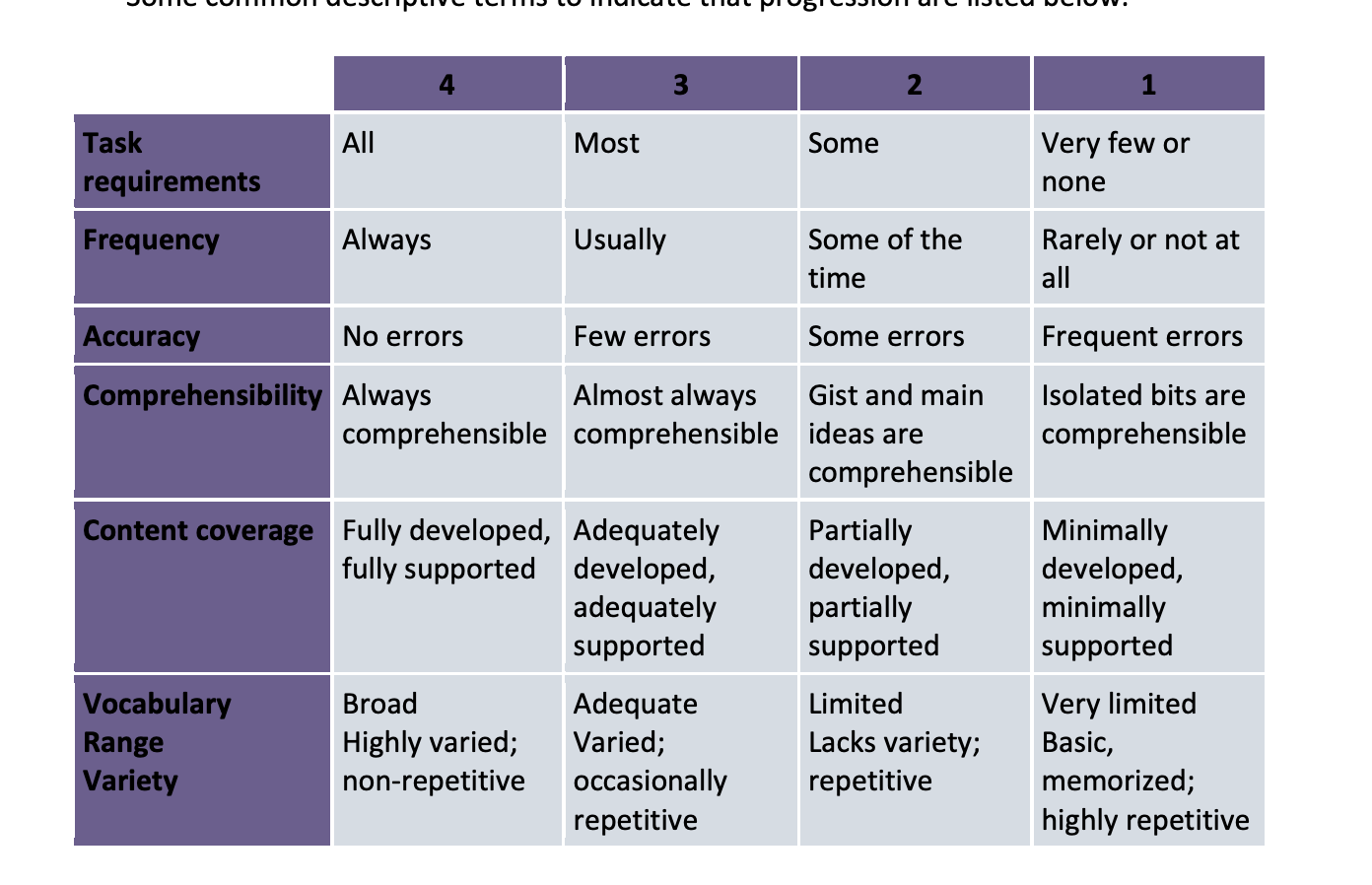
Writing to meet formal criteria
- Rubric “objectivity” illusion:
- How much evidence is expected? Same for every student? Is it a quantity of supporting examples? Do we count everything?
- Students write to the criteria the professor imposes
- Criteria for writing become the non-negotiable center of the course
- Going for the "A" (vs. professional necessities to publish, get hired, assess feasibility, review state of the field, design and build something new)
Are writing problems also coding problems?
Format
Structure
Flow
Historically, women have had a tough time when it comes to writing novels and combatting prejudices and sexism. Many female authors have had to publish their novels with a male pseudonym or as an anonymous author. When writing Frankenstein, Mary shelley wrote it among her friends to see who could write the best horror story and she did not tag it with her name. The famous story was left anonymous so her friends wouldn't have a prejudice view when reading it. The story ended up being her most famous book and she was a female writer, who wrote a horror story about a male creator and a frightening, male creature.
Happy grading. . .
- Mary shelley (small correction, not a big deal?)
- Topics that want their own new paragraphs
- Run-on sentence: a hierarchy problem
Now let's look at some early student markup of recipes
<recipe type="allAges" name="sourdoughIngredients">
<measurement>1 1/4 cups</measurement> (<amount>160 grams</amount>)
<ingredient>white bread flour</ingredient>, plus more for dusting
<measurement>1/4 cup</measurement> (<amount>38 grams</amount>)
<ingredient>stone-ground whole-wheat flour</ingredient>
<measurement>1/4 cup</measurement> (<amount>32 grams</amount>)
<ingredient>stone-ground whole rye flour</ingredient>
<measurement>1/2 teaspoon</measurement>
<ingredient>instant yeast or bread machine yeast</ingredient>
<measurement>1 teaspoon</measurement>
<ingredient>table salt</ingredient>
<measurement>1/4 cup</measurement> (<amount>55 grams</amount>)
<ingredient>dry fermented cider</ingredient>
<measurement>1/2 cup</measurement> (<amount>120 grams</amount>)
<ingredient>lukewarm water</ingredient> (<temperature>80 degrees</temperature>),
plus an optional 1 tablespoon recipe></recipe>
<!--jgb: You may substitute a Pilserner beer for the dry fermented cider. -->- Lineation / hard returns misunderstood as structure
- subordination and hierarchy issue
- exploring relationship between comments and code and text
<recipe type="bread" name="country loaf (pain de campagne)">
<measurement type="cup">1 1/4 cups (<measurement type="gram">160 grams</measurement>)</measurement>
<!-- sd: is this a good/okay way to do measurement types? it seems weird but i don't really know -->
<ingredient type="dry">white bread flour</ingredient>, plus more for dusting
<measurement type="cup">1/4 cup (<measurement type="gram">38 grams</measurement>)</measurement>
<ingredient type="dry">stone-ground whole-wheat flour</ingredient>
<measurement type="cup">1/4 cup (<measurement type="gram">32 grams</measurement>)</measurement>
<ingredient type="dry">stone-ground whole rye flour</ingredient>
<measurement type="tsp">1/2 teaspoon</measurement>
<ingredient type="dry">instant yeast or bread machine yeast</ingredient>
<measurement type="tsp">1 teaspoon</measurement>
<ingredient type="dry">table salt</ingredient>
<measurement type="cup">1/4 cup (<measurement type="gram">55 grams</measurement>)</measurement>
<ingredient type="wet">dry fermented cider</ingredient> (may substitute Pilsener beer; see
headnote)
<measurement type="cup">1/2 cup (<measurement type="gram">120 grams</measurement>)</measurement>
<ingredient type="wet">lukewarm water</ingredient> (<temp>80 degrees</temp>),
plus an <measurement type="tsp">optional 1 tablespoon </measurement>
DIRECTIONS
<step n="1"><equipment type="utensil">Whisk</equipment> together the flours, yeast and salt in a
<equipment type="bakeware">mixing bowl</equipment></step>.
<step n="2">Combine the cider and water in a
<equipment type="bakeware">liquid measuring cup</equipment></step>.
<step n="3">Add the liquid to the flour mixture; use a <equipment type="utensil">spatula</equipment>
or <equipment type="utensil">bench scraper</equipment> or your hand
moistened with water to blend them for about a minute</step>.
The dough should be shaggy yet cohesive.
<step n="4">Cover the bowl with a <equipment type="cloth">towel</equipment>;
let the dough rest for <time>20 minutes</time></step>.
<!-- MORE CODE for the recipe steps -->
</recipe>- densely coded
- experiments with attributes
- missing top-level hierarchy
- We need to talk about numbers
Who writes the rules?

Student schema writing = project management experience
Better than writing to the prof's rubric!
XML + Relax NG =
writing intensive revision process
datatypes xsd = "http://www.w3.org/2001/XMLSchema-datatypes"
start = root
#bb_1/22/20: root is the root element
root = element root{intro, step+}
#bb_1/22/20: step is one of our 'highest' content objects on the hierarchy
step = element step{num, (exp|act|obj|desc|text)+}
#amp: This would be better as mixed content!
#amp: So, it would look like this: step = element step{num, mixed{exp | act | obj | desc)+}}
#bb_1/22/20: intro is a misc element
intro = element intro{text}
#bb_1/22/20: other important places in the hierarchy
exp = element exp{(type|act|obj|desc|text)*} #exp = explanation
desc = element desc{(type|act|obj|text)*} #desc = description
#amp: This is the same as before: these two would be better written with mixed content!
So: exp = element exp{mixed{(type | act | obj | desc)*}}
#desc = element desc{mixed{(type | act | obj)*}}
act = element act{type, text} #act = action
obj = element obj{type, text} #obj = object
#bb_1/22/20: attributes
num = attribute num{xsd:int}
type = attribute type{text} #types:
#comp = computer
#conc = concept
#rel = relate
#adj = adjective
#spec = specific
#unspec = unspecific
#amp: My first comment is about comments! I'm glad to see you using comments
not only to leave notes to the instructors, but also to give information about decisions
that you're making while coding.
This is so helpful when it comes to projects that you're going to share publicly,
because it allows others to see these choices and better understand your code.
So, great work with that!
#amp: Another thing that I like with your schema is the organization!
You have clearly designated sections for your elements and attributes that make your code really clear.
#amp: For the future, I would try working more with the other repetition indicators,
as well as with datatypes! In this specific assignment, you could code for the date of the
assignment, and use xsd:date or xsd:YearMonth (or both!) to give even more metadata in
your xml. Overall, this is a well-organized, simple schema that you'll be able to develop
into a more complex schema if you were to continue with it (and with future projects!)<?xml version="1.0" encoding="UTF-8"?>
<?xml-model href="01-22_SCHEMA_rngEx02.rnc" type="application/relax-ng-compact-syntax"?>
<root>
<intro> Make sure you do the following: </intro>
<step num="1"> 1) <act type="spec">Save</act> your <obj type="comp">Relax NG file</obj>
<desc type="rel">with the <obj type="comp">.rnc extension</obj> at the
<obj type="conc">end</obj></desc> and <act type="unspec">work with it</act> in the
<desc type="adj">same</desc> <obj type="comp">file directory</obj>
<desc type="rel">with your <obj type="comp">.xml file</obj>.</desc>
</step>
<step num="2"> 2) <act type="spec">Associate</act> your <obj type="comp">.rnc schema</obj>
<desc type="rel">with your <obj type="comp">.xml file.</obj></desc>
<exp>(You are <desc type="rel">finished</desc> with this <obj type="conc">exercise</obj> if
your <obj type="comp">XML</obj> is <desc type="rel"><act type="spec">associated</act>
with your schema</desc> and <desc type="adj">both</desc>
<obj type="comp">files</obj> have <act type="spec">come out</act>
<desc type="adj">"green"</desc> in <obj type="comp">oXygen</obj>.)</exp>
</step>
<step num="3"> 3) <act type="spec">Upload</act>
<desc type="adj">BOTH</desc>
<obj type="comp">files</obj> here. We <act type="unspec">need to see</act> your <desc
type="rel"><obj type="comp">.xml file</obj> and your <obj type="comp">.rnc
file</obj>.</desc>
</step>
</root>
<!-- bb_1/22/20: I wanted to keep it simple for once, so I literally
used the assignment as a text. Sue me.--> Granular processing:
writing as you think step by step:
(//p[descendant::placeName => distinct-values() => count() gt 2])[last()](//p[count(distinct-values(descendant::placeName)) gt 2])[last()]XPath 2
XPath 3
vs.
(so much easier to teach and read!)
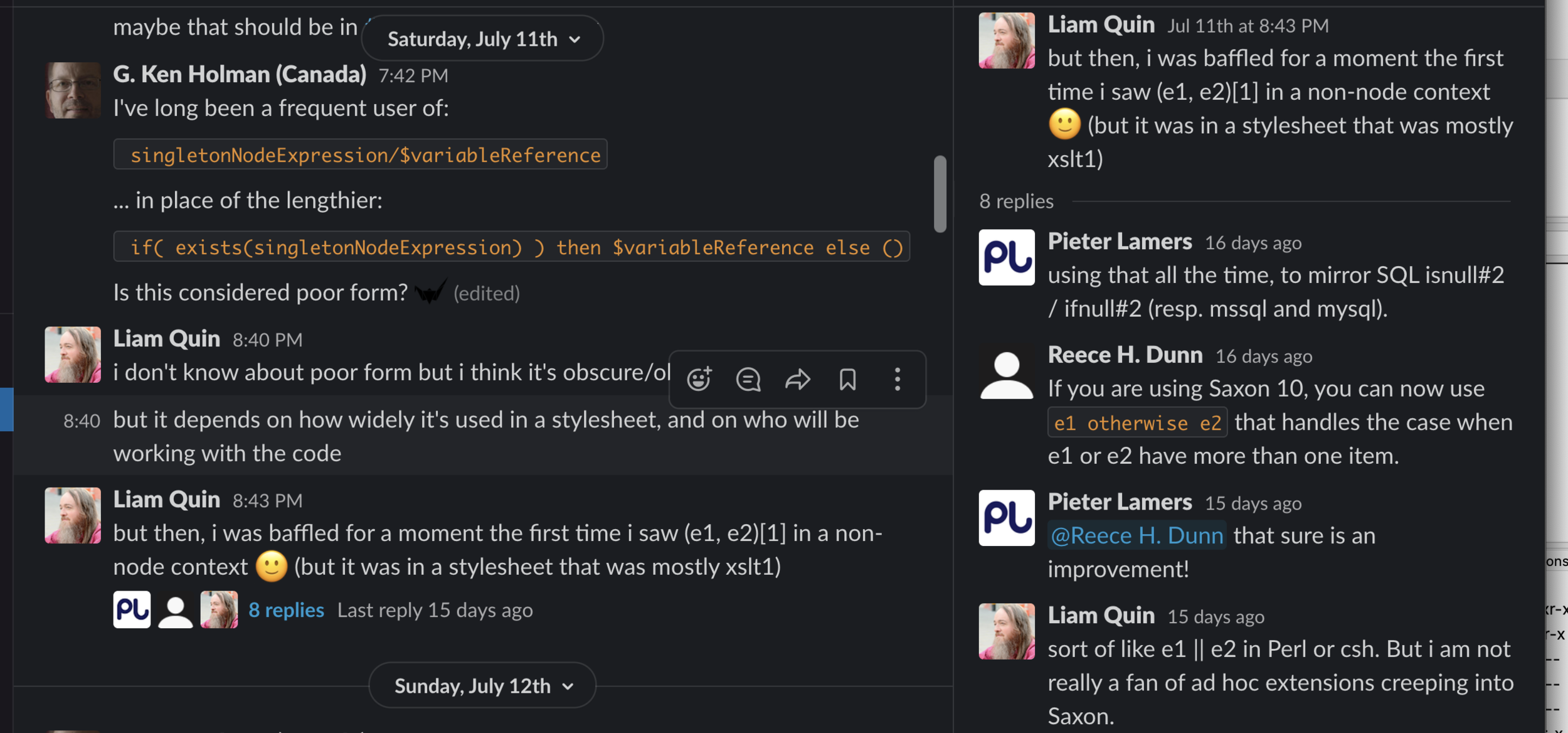
Idiomatic expressions in XPath?
From the XML Slack, 11 July 2020
Coding to Professionalize
- Markup as intellectual encounter with texts
- Systematic, algorithmic thinking about structures
- Development of data models
- Interface design
- Team management
- directed by students (guided by prof)
- Interchange! Learn and adapt from past projects by reviewing others' code and documentation
Blind Interchange
“you want my data; you go to my website or load my CD and download or copy both the data of interest and any associated files (e.g., documentation or specifications like a TEI ODD, a METS profile, or the Balisage tag library); based on your knowledge of my data that comes from either the documents themselves or from the associated files (or both), you either change my data to suit your system or change your system to suit my data as needed. Human intervention, but not direct communication, is required.”
— Bauman, Syd. “Interchange vs. Interoperability.” Presented at Balisage: The Markup Conference 2011, Montréal, Canada, August 2 - 5, 2011. In Proceedings of Balisage: The Markup Conference 2011. vol. 7 (2011). https://doi.org/10.4242/BalisageVol7.Bauman01.
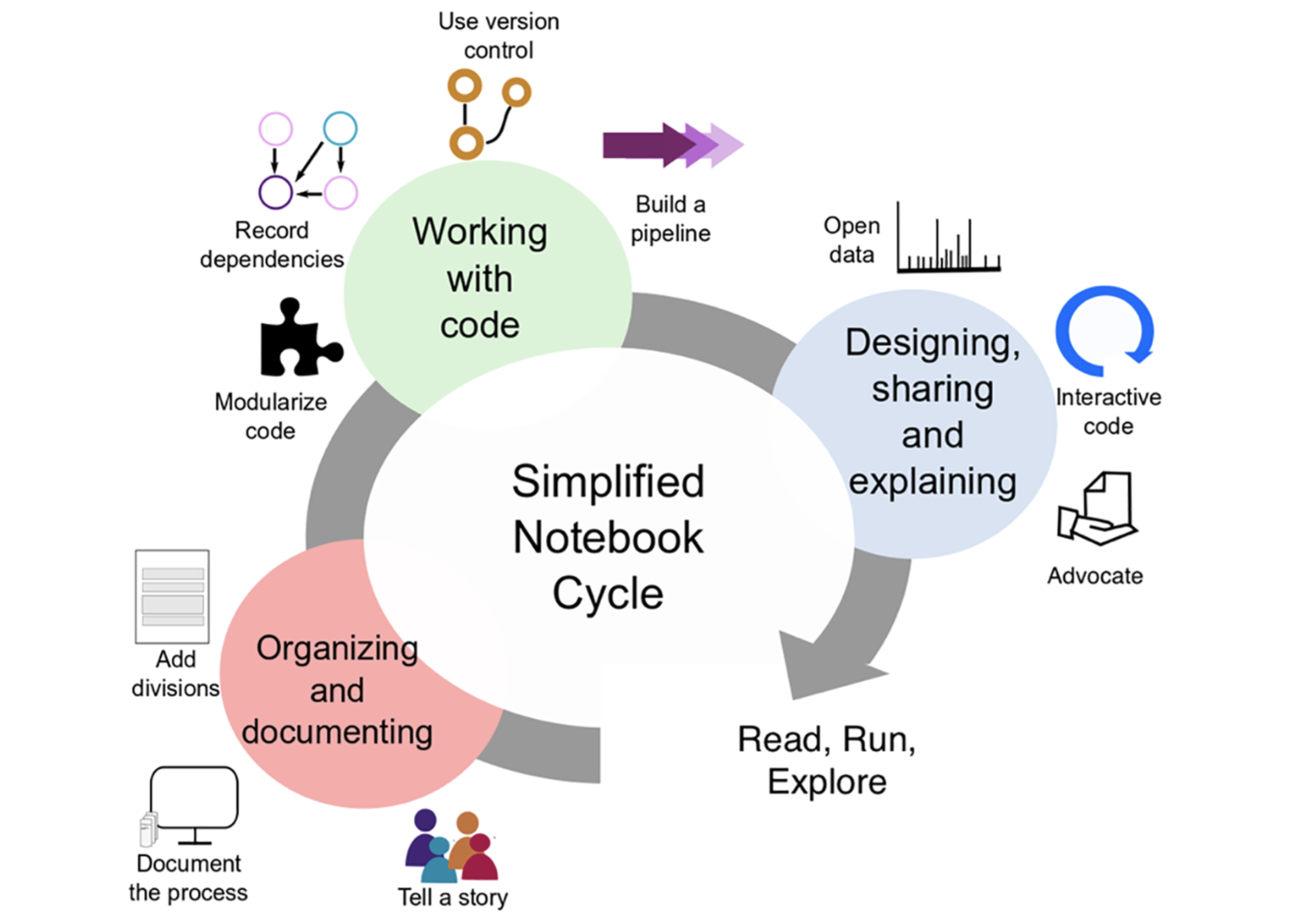
Source: Adam Rule et al., “Ten simple rules for writing and sharing computational analyses in Jupyter Notebooks” PLOS Biology (July 25, 2019).
- Build a project in stages
- Require teamwork in review, revision, and documentation of code
- Instructor is a guide and sometimes a participant
- Students set the rules by which their projects run
- Run the projects for real, on the public web
- Students license the code and choose how to share
Some core coding and writing intensive principles

Paying it forward
- Michele Ierardi's proof-of concept PhD thesis proposal ~mid 1990s. (See project origins)
- a classroom exercise (2003 - 2013)
- original site used in my American Lit classes to introduce students to ms scholarship
- a new design vision by a coding student project team led by Nicole Lottig (2015-2016)
- a cohort of profs and students learning from that project, including the Brecon Team (Prof. William Campbell, Amber Peddicord, Alyssa Argento (2016+)
Brecon Project (2019-2020)
Comparison of 8 versions of a charter for a Welsh Collegiate Church and School founded in 1541
Writing intensive project work
closed issues from Fall 2019 Brecon GitHub repository
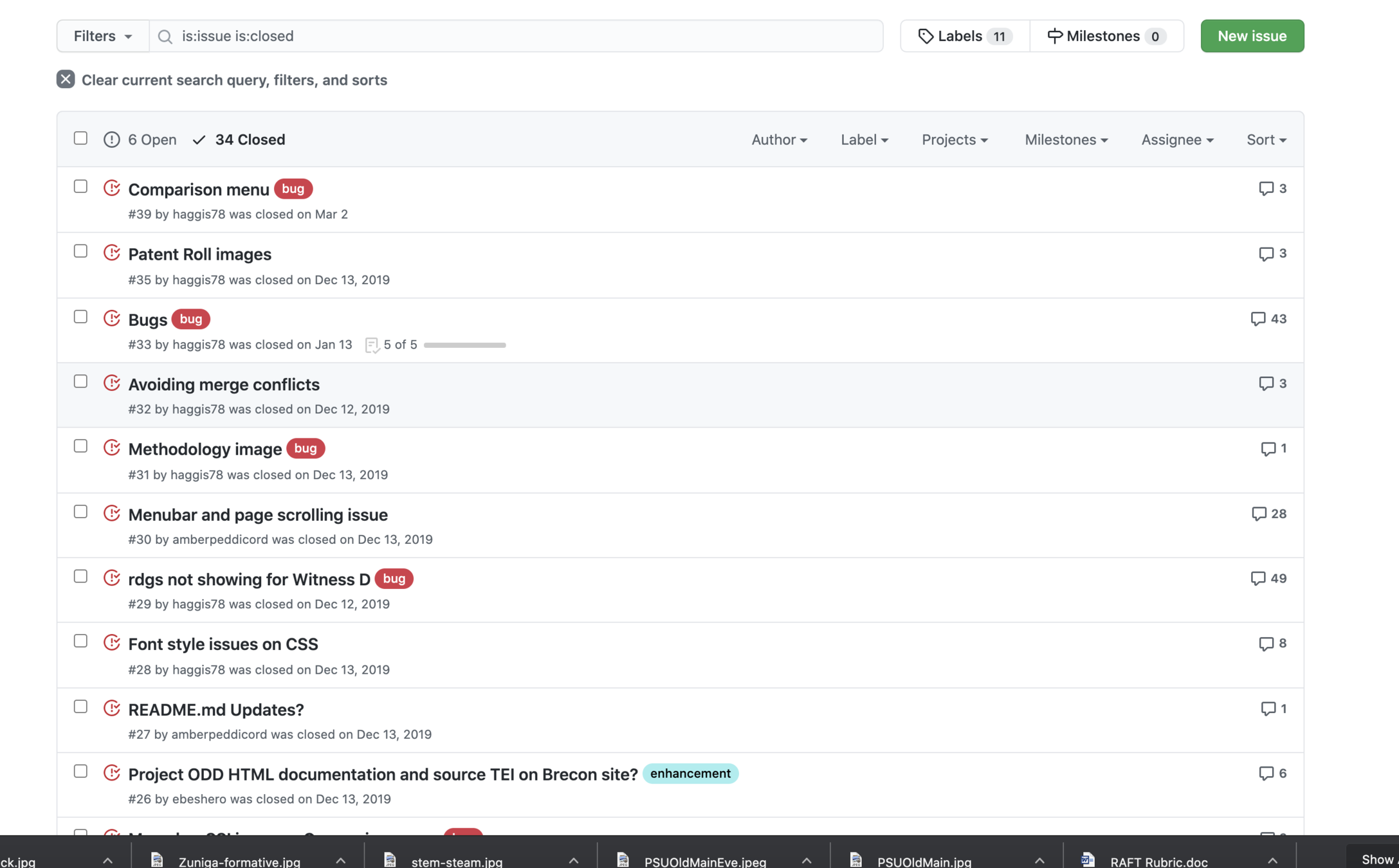
SVG Graph made by Alyssa Argento with XSLT processing TEI XML critical apparatus markup
What if Text Encoding and Processing were among the many “W” course options at a university?
- Probably one or two small classes at a big university, that design highly visible projects
-
Visible in the catalog as an attractive option for non-specialists
- Cross-disciplinary
- Accessible to code beginners
-
What resources do we need?
- syntax-checking code editor
- web server and SFTP access
- GitHub
- Pull the XML stack out of the invisible margins and into the writing curriculum
Thanks for listening!
Please visit our course and project incubator at https://newtfire.org
Link to these slides: https://bit.ly/codeWrite
Questions and comments welcome!
